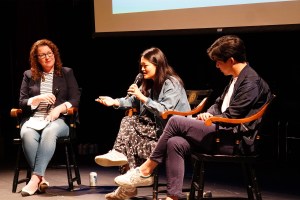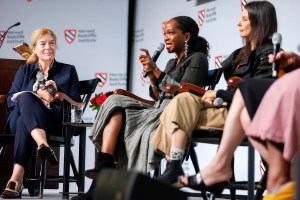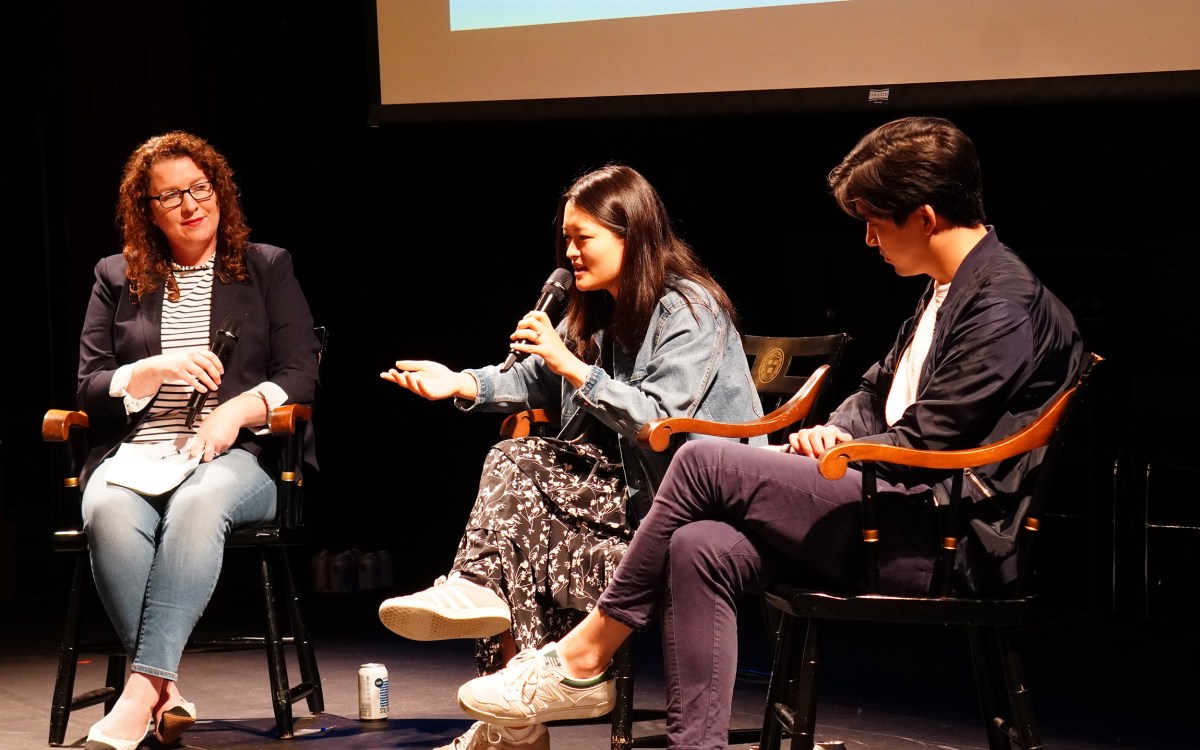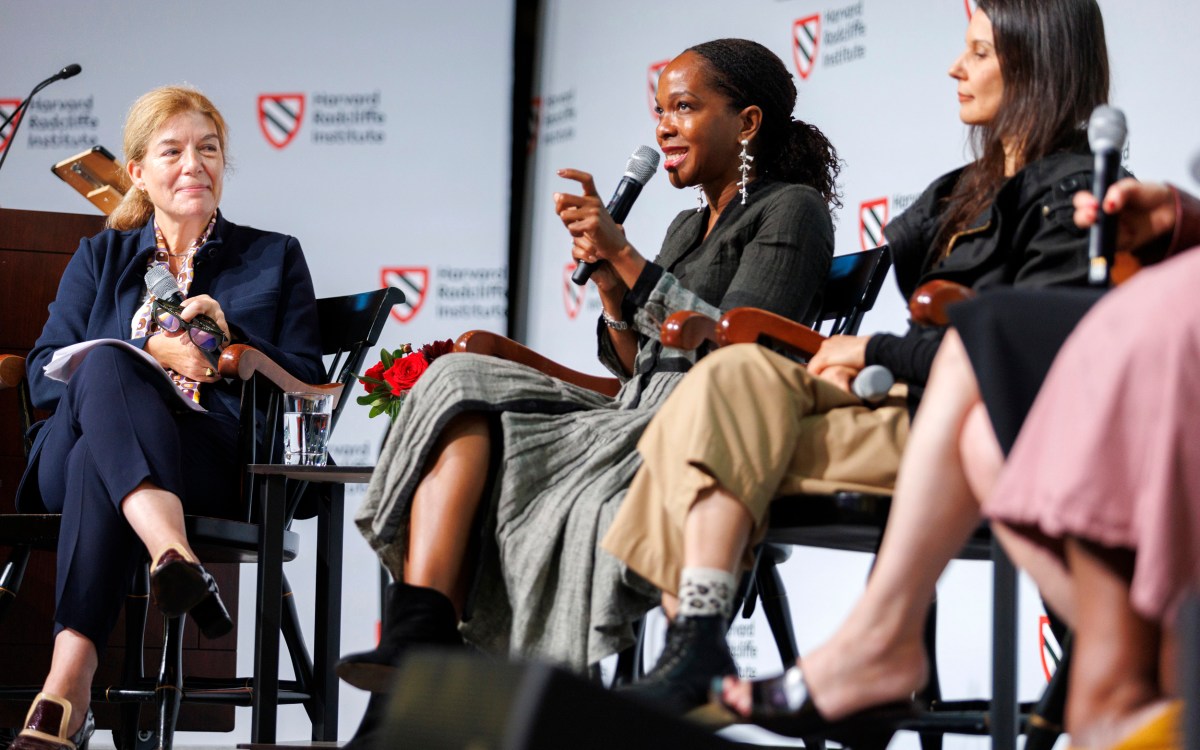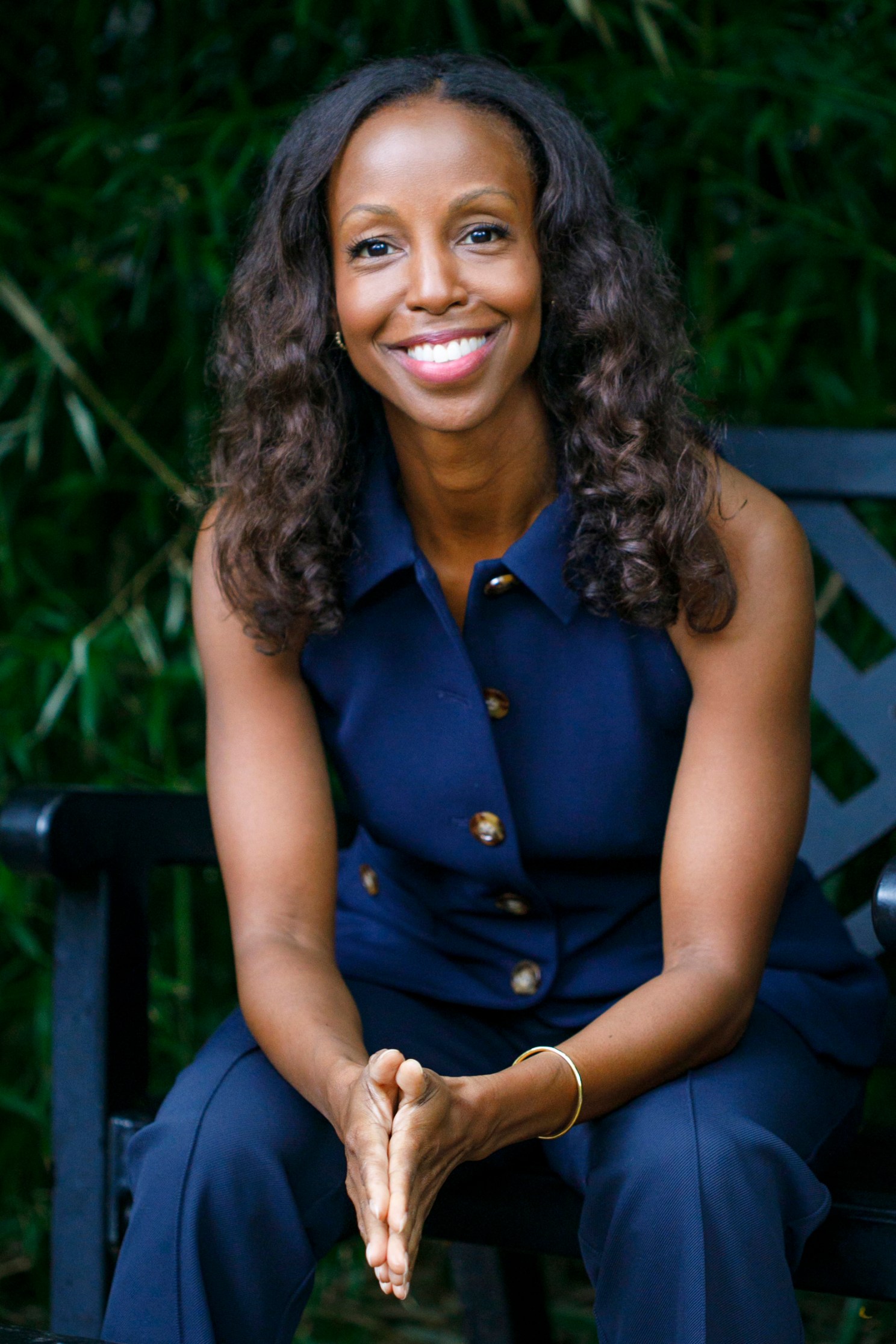
Sarah Lewis.
Stephanie Mitchell/Harvard Staff Photographer
‘Unseen Truth’ shows the real picture behind ‘Caucasian’ ideals
Sarah Lewis explores the false foundation of America’s racial hierarchy in new book
Sarah Lewis was deep into archival research for her latest book project when she stumbled upon an unusual set of images that made her question everything she thought she understood about race. The photographs, from the late 1800s, showed female performers in a P.T. Barnum sideshow known as the “Circassian Beauties,” who looked, as Lewis described, “like Angela Davis, but were billed as exemplars of white racial purity from the region of the Caucasus.” It was a show that proved influential even in political life, and had consequences for liberation practices and the early Civil Rights movement.
“What the performance did was skewer our idea of race,” explained Lewis, John L. Loeb Associate Professor of the Humanities and Associate Professor of African and African American Studies. “I was confronted with this moment when Americans could see the fiction underneath the entire system of racial hierarchy, and fashioned a new regime through which to keep it stable and to keep that fiction in place. I was compelled by this untold story in American life.”
In her new book, “The Unseen Truth,” Lewis uses Americans’ fascination with the Caucasus region — and the incorrect association of the term “Caucasian” with whiteness — as a case study for examining how the fiction of a racial hierarchy was strategically stabilized. She sat down with the Gazette to talk about this hidden history, her extensive research, and how the project changed her. This interview has been condensed and edited for length and clarity.
What led you to take on this project?
It was really understanding the depth of fascination about the [Caucasus region] on the part of Woodrow Wilson that made me write the book. It begins and ends with the federalization of segregation and the use of racial detailing as a form of instantiating the unspeakable in American government, and in American life. As Michel-Rolph Trouillot has said, “There comes a point when we must decide if something belongs to history or if it belongs to fiction.” We’ve never looked squarely at the idea of the term “Caucasian” and called it a fiction out loud. We’ve covered it up and found other ways to keep it to maintain a system. America’s racial divide is built on a lie. Black clerks working in Wilson’s administration, who were early, unsung Civil Rights leaders — like Swan Marshall Kendrick and Freeman Henry Morris Murray — saw that. They knew. We all live with the regime that was created in the face of that moment. I think part of what makes racial domination so difficult to dislodge is that it’s predicated on a regime, a complex system of assembling narratives to justify the unspeakable. The reason to write the book was to make clear the legacy that covering up these fictions have spawned.
Where did American’s fascination with the Caucasus region come from?
The Caucasian War takes place and ends at the same time as the American Civil War, and there were parallels between them that made the Caucasian War topical for embattled American nation. One was the associations with slavery (white slavery for the Caucasus). Both were southern, seceded nations. But the main reason had to do with the instability of racial formation. To see the region that’s been seen as the homeland of whiteness effectively obliterated provoked nervousness for the American public on both sides.
Did this fixation with the Caucasus region end?
The way history has been framed to date, the answer has been yes. Yet what the primary documents in the archives reveal is, in fact, the answer is no. There was sustained curiosity about the region, and that curiosity had implications for the racial regime we live with today. Woodrow Wilson, as late as 1919, requests a report about the look of women from the Caucasus region, when he likely should have been doing anything else. Langston Hughes, as late as the 1930s, goes to the Transcaucasus region and finds himself stunned that the people there look nothing like this image of whiteness he’s been given and instead are, as he describes, “brown as russet pears and dark as chocolate.” You have these serial examples, buried beneath the seemingly fixed racial order. There was a conscious questioning about whether race really rests on a foundation of data. The Caucasian War does end. There are other terms used when the idea of the Caucasus region is understood to be a fabricated source for the idea of whiteness: Aryan, Anglo-Saxon, and so on. However, this foundational fiction remains a source of concern with consequences for how we secured this racial regime, and that is what has not been addressed before.
Much of this book is about the ways we are conditioned not to see. Can you explain that idea?
It’s nearly a maxim now: Images help us see and shore up ideas about race. An example of this is the geyser of stereotypes circulating through racist caricatures in the 19th and 20th century. But what’s really important to understand is that the use of race itself as a structuring force in American society altered, quite literally, how we see, how we make sense of what’s in front of us. It is why our debates about monuments are about more than the sculpture and the material and the location. We have come to understand this racialized world through how we visually constructed it. This book is deeply invested in what we fail to discuss often, which is how race changed how we see.
You end the book with a moment when the research suddenly became very real. Could you describe that?
I had a researcher’s dream and nightmare take place at once. This group of Circassians — a group from the Caucasian diaspora — came to a work-in-progress talk I gave at NYU. Afterward they sent me a flash drive as a way of thanking me for the research. On it were articles and maps they had found about this cleavage between the Caucus as a geography and the Caucusian ideal as a racial concept. I held my breath as I looked, because I had spent 10 years trying to amass that myself. I stopped and nearly rewrote the whole book, not because they had located things I hadn’t, but it raised the stakes. The idea of race is like a photograph without a negative; there’s no factual basis for the idea of racial domination or supremacy of any kind. And to have the very people from the Caucasus region tell me that they know, and urge me on to de-mythologize the region, did make me go back into the text and ensure that the point was clear.
Are you looking forward to having this research out in the world?
Well, the process of writing the book itself is the reward. I’m grateful that I trusted the archive and the evidence that I found, and I hope I did justice to the untold stories, as I believe they’re critical for our current understanding. There are lies about American life and the use of race in society that are just hidden in plain sight. It is an intense historic era we’re in today and I have such belief and love for global society and the country I’m in. My hope is that this book shows how you can also love this country without lying about it. And hopefully it shows where those lies are.
